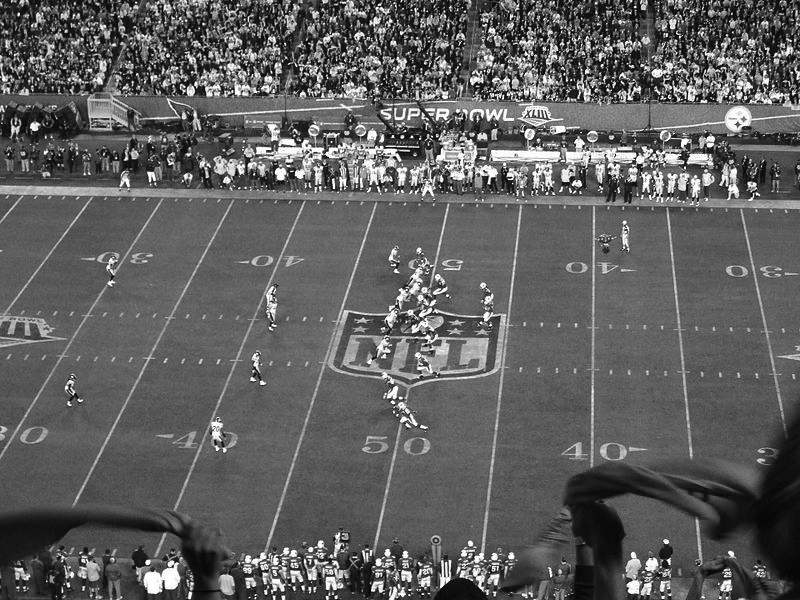Real estate is a relationship business. It is sometimes an ego business. And it is often an emotional business.
So making the case that data-driven analysis should drive investment decision-making can be difficult.
But in another arena, data analysts have been gradually reshaping competitive strategies.
To see for yourself, tune in this weekend to watch the Kansas Chiefs face the Philadelphia Eagles in Superbowl LVII.
Much in common
At first glance, you may not see many similarities between real estate investing and the National Football League (NFL), but consider the similarities.
In both, participants are very competitive, highly incentivised to perform strongly and constantly looking for a source of edge.
In both, outcomes are determined by a combination of skill and luck. An imperfect relationship exists between the quality of decisions made and the results achieved, so optimising a strategy is complex.
And there are cultural similarities too. American football is a conservative sport; real estate is a traditional asset class.
In both the NFL and real estate investing, decision-making is often guided by what has been done in the past, with a tendency to rely on the instincts of seasoned professionals.
Gradual evolution
The role of data analysts within the NFL has grown incrementally over the past decade, influencing all forms of decision-making, from game strategy to recruitment.
Viewers of the Superbowl will see that the way teams play the game has changed markedly over the past 10 years.
Specifically, teams have become more aggressive in their decision-making. Analysis shows that, in many cases, teams should lean towards decisions that include more risk but a higher payoff. So, for example, teams – especially the Chiefs – are now more likely than they used to be to implement passing plays rather than running the ball on first down.
Going for it on fourth down
But the most evident example is decision-making on the fourth down. Teams need to progress the ball 10 yards in four attempts. If they do not, they cede possession.
The safe option for teams to take if they have failed to cover the ground after three attempts (and are not within field goal range) is to punt the ball so that the opponent taking possession does so with a less favourable field position.
Often, teams take the conservative option. But informed by data, analytics, and probabilistic thinking, teams are now likely to consider going for it on fourth down. More likely than not, we will see such a play in the Superbowl.
That was not the case a decade ago when coaches were more reluctant to go for it, especially early in the game. Historically, coaches’ instincts did not align well with the optimal strategies revealed by data.
Their instincts led them to overweight the importance of field position relative to possession. A fourth-down conversion attempt may or may not fail, but a punt always results in the opposition taking possession of the ball.
Analysts provide a holistic assessment of whether to go for it on fourth down by considering the impact on the overall probability of winning the game given a fourth-down success and fourth-down failure, weighted by the expected conversation rate of that fourth down.
They compare that with the expected win probability given a punt. They recommend whichever option implies the higher win probability. Such analysis is increasingly informing crucial in-game decisions.
But the data and analysis allowing better decision-making have been around for a long time. Academics have highlighted NFL coaches’ failure to optimise their strategies for over 20 years.
Persistent inefficiencies
If teams could have put more points on the board and gained more wins in the season if they had embraced analytics earlier, why didn’t they?
There are cultural factors. In a conservative sport, tradition can trump reason.
There are capability issues as well. To embrace analytics, you need to think probabilistically, and that does not come easily to everyone, including, perhaps, many of the personalities that became coaches 20 years ago.
There is a social context to fourth-down decisions too. If the conceived wisdom is that it is appropriate to punt on fourth down, taking a contrarian view may well feel uncomfortable.
Such feelings may be acutely felt if tens of thousands of fans scrutinise your decision and provide boisterous feedback in real time. People prefer to be liked than be right.
Indeed, career risk may have come into play for coaches who see the value of analytics, but struggle to convince the fans and ownership.
It takes time for cultures to change, capabilities to be enhanced and thresholds of acceptance to be reached. During that time, inefficiencies persisted, despite the competitiveness of the support and enormous incentives for winning. Even today, teams go for it on fourth down less frequently than analytics suggest they should.
Source of opportunity
The evolution of decision-making in the NFL shows that optimal strategies do not come from instinct informed by experience. It must be informed by data, analysis and probabilistic thinking too.
What is true of American football can also be true of real estate investing. Previously, I have argued that potential persistent inefficiencies emanate from a bias for prime over secondary properties. Or from an aversion to assets with idiosyncratic risk.
More broadly, persistent inefficiencies in property could be hiding in plain sight. Existing data may not reveal them, but emerging non-traditional datasets will.
The inefficiency of real estate is one of its most attractive features. Unlike more liquid asset classes, it is possible to have an informational or analytical advantage.
The failure of others to optimise their decision-making is a great source of opportunity for those investing in data and analytics.
Both the Eagles and Chiefs have enjoyed success after embracing analytics. Real estate investors seeking a competitive edge should do so too.







